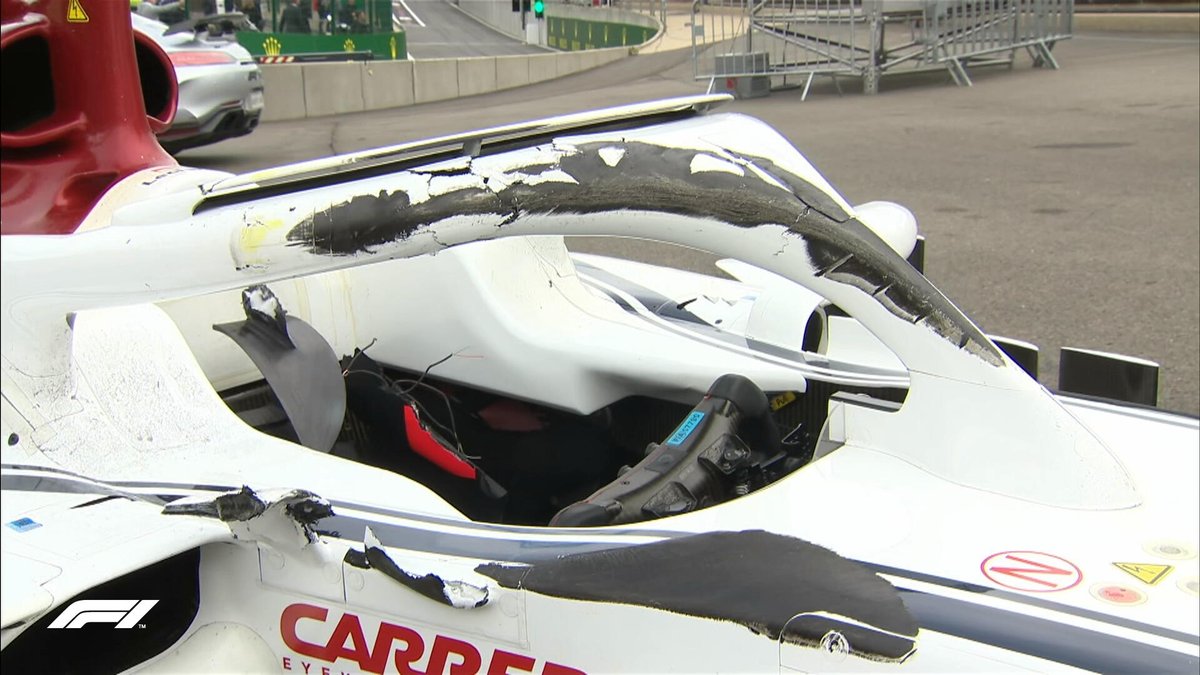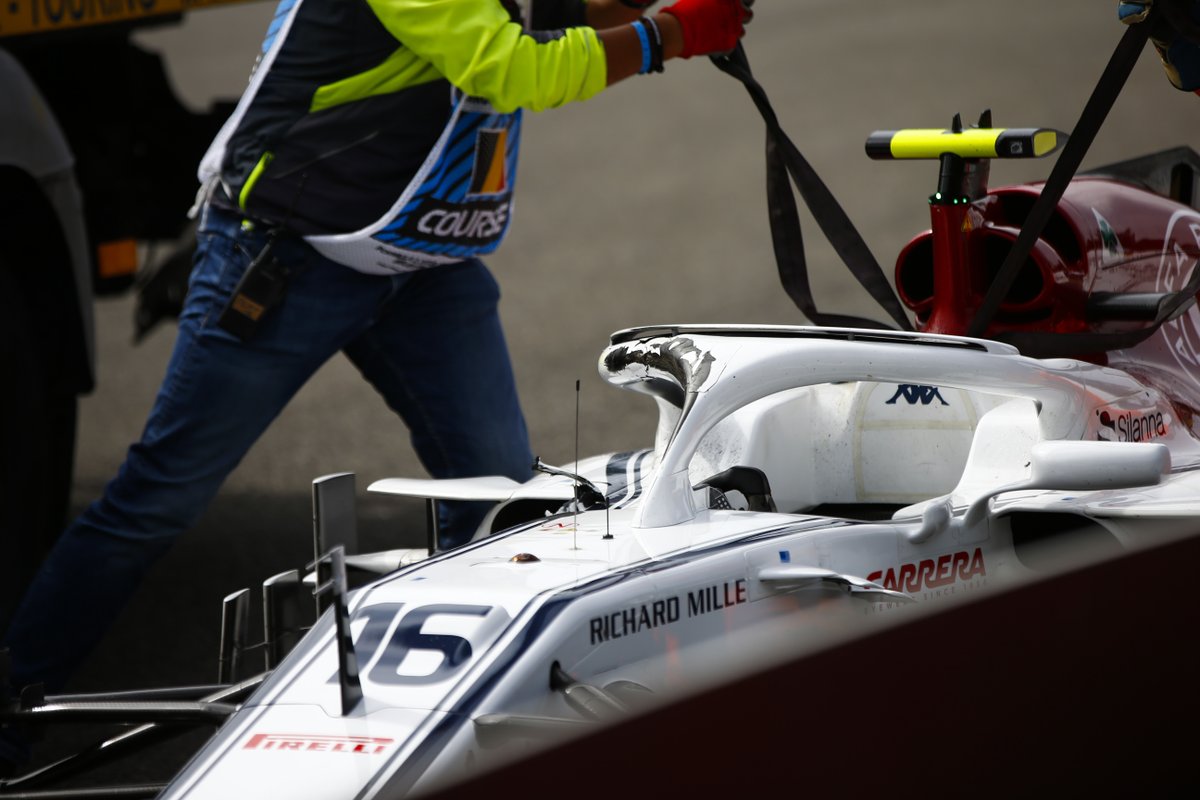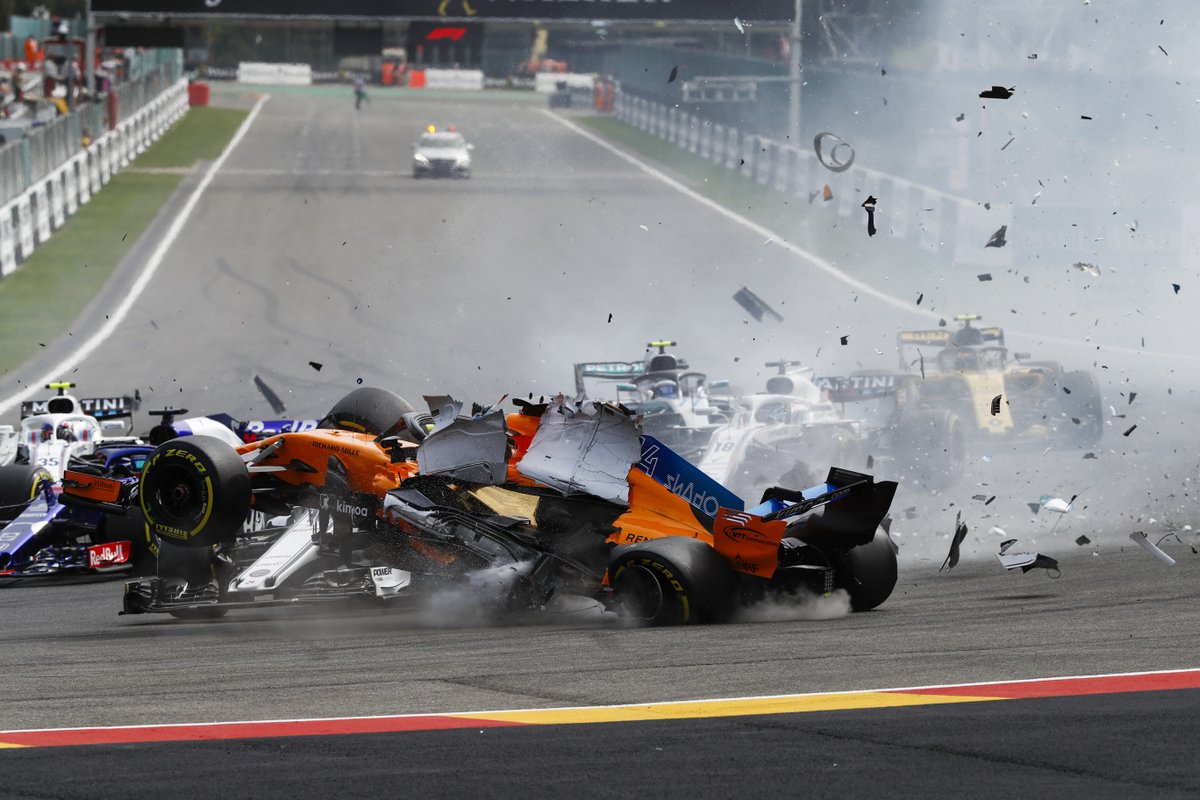The FIA’s final report regarding Charles Leclerc and Fernando Alonso’s crash during this year’s Belgian Grand Prix at Spa points to the Halo cockpit protection system as having saved the young Monégasque driver from a visor strike.
While the assumption has always been that the Halo did do its job in keeping Leclerc safe, it was only recently found that Alonso’s endplate would have impacted the Sauber driver’s helmet visor, according to Autosport.
In fact, the Halo not only managed to remain structurally intact despite the 58 kW impact from Alonso’s right front wheel, but it also worked to deflect the McLaren away.
“From the available data and video footage, we are confident that the wheel would not have hit Leclerc’s helmet,” stated the FIA’s safety director Adam Baker. “But, as Alonso’s car continued to yaw relative to Leclerc’s, we believe that Alonso’s front wing endplate would have just contacted Leclerc’s visor.”
“It is difficult to predict the severity of the contact with any precision, though.”
Analysis revealed that the relative velocity between the two cars was 30 km/h (19 mph), with an estimated impact angle of 90 degrees. While the wheel-to-halo impact was severe enough so as to break the suspension on Alonso’s McLaren, the right-front wheel rim and tire remained intact.
The report also noted how if the full mass of the McLaren had impacted the Sauber’s Halo through the primary structure, the energy would have been roughly 30 kJ (based on 840 kg at 30 km/h). In turn, this could have had devastating consequences if instead of the Halo, it would have hit Leclerc’s helmet.






